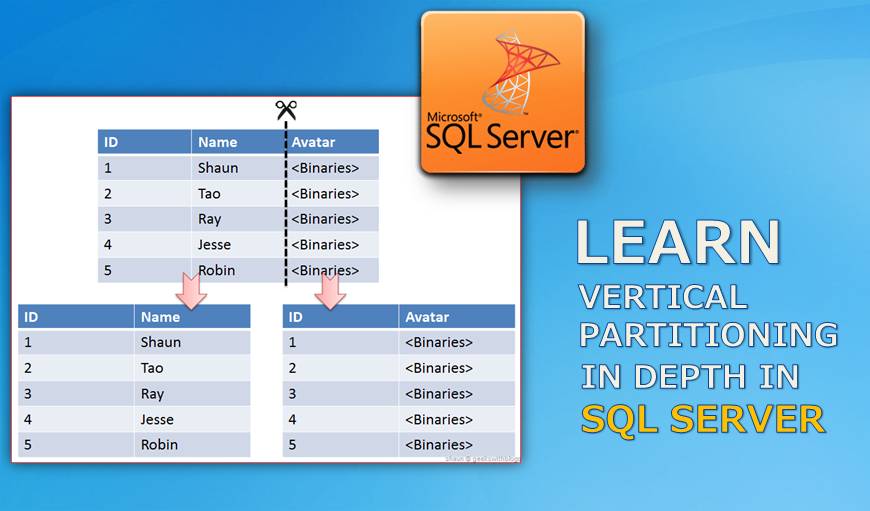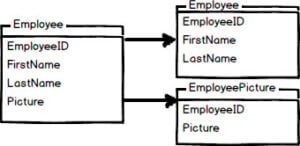The article explains in depth the use of Vertical Partitioning in improving the performance and maximizing I/O operations on a SQL server.
Vertical Partitioning in SQL Server, an important feature introduced in SQL 2005 Enterprise Edition, is often used to improve the Server’s performance in cases of large data in tables. When a query is used to retrieve all columns form a table that contains wide texts, vertical partitioning comes into picture.
So basically vertical partitioning splits your table into more than two tables with different columns. It is extremely useful in large databases where performance is a critical factor. There is horizontal partitioning too but it depends on your data nature.
The article describes the use and function of Vertical Partitioning in SQL Servers and their pros and cons. 
Vertical Partitioning

Vertical Partitioning in SQL Server helps users in columns of tables of database which are required to be placed in two or more databases. Thus, the resulting partition becomes more manageable and easy to use, improving the performance of SQL server up to a large extent by enhancing and maximizing the number of I/O operations of Queries.
The partition doesn’t require any change of codes but only the pointers in the view to new files’ location.
Use in Large Databases
Large Databases often take images and large text data fields in account and are narrow with data. In such cases, it’s required to perform the vertical partitioning in which you can break the table as they have large data columns by putting them into newer columns. Small columns can eventually be retained in the original database as units.
It can be a design challenge in some cases depending on the construction of data. In vertical partitioning, data gets stored in different places and your backups become a little complicated than its earlier situation. So you need to backup the entire database’s data instantaneously because then only you can perform a full restoration of your partitioned data.
Issues in Vertical Partitioning
Although vertical partitioning is very helpful, it has some issues that can’t be overlooked. In Partitioning, you are breaking the data into different parts of files which means that if you are Inserting or Deleting, then it’s required to run multiple statements. DELETE has to be run on each of the referenced table because SQL server will reject a DELETE from a view if it points to multiple tables.
The views are however transparent to users but it is required from the users during modification of code that they account for the location of data whenever they make any changes.
There is no doubt that Vertical Partitioning has its benefits and logical uniformity and also enhances performance, but there is also no denying that it can create complexities in operations which can sometimes be difficult to handle. Before you initiate any partitioning operation on the database, do keep a corrupted mdf recovery tool nearby to deal with any contingencies.
Author Introduction:
Victor Simon is a data recovery expert in DataNumen, Inc., which is the world leader in data recovery technologies, including repair Access and sql recovery software products. For more information visit https://www.datanumen.com/